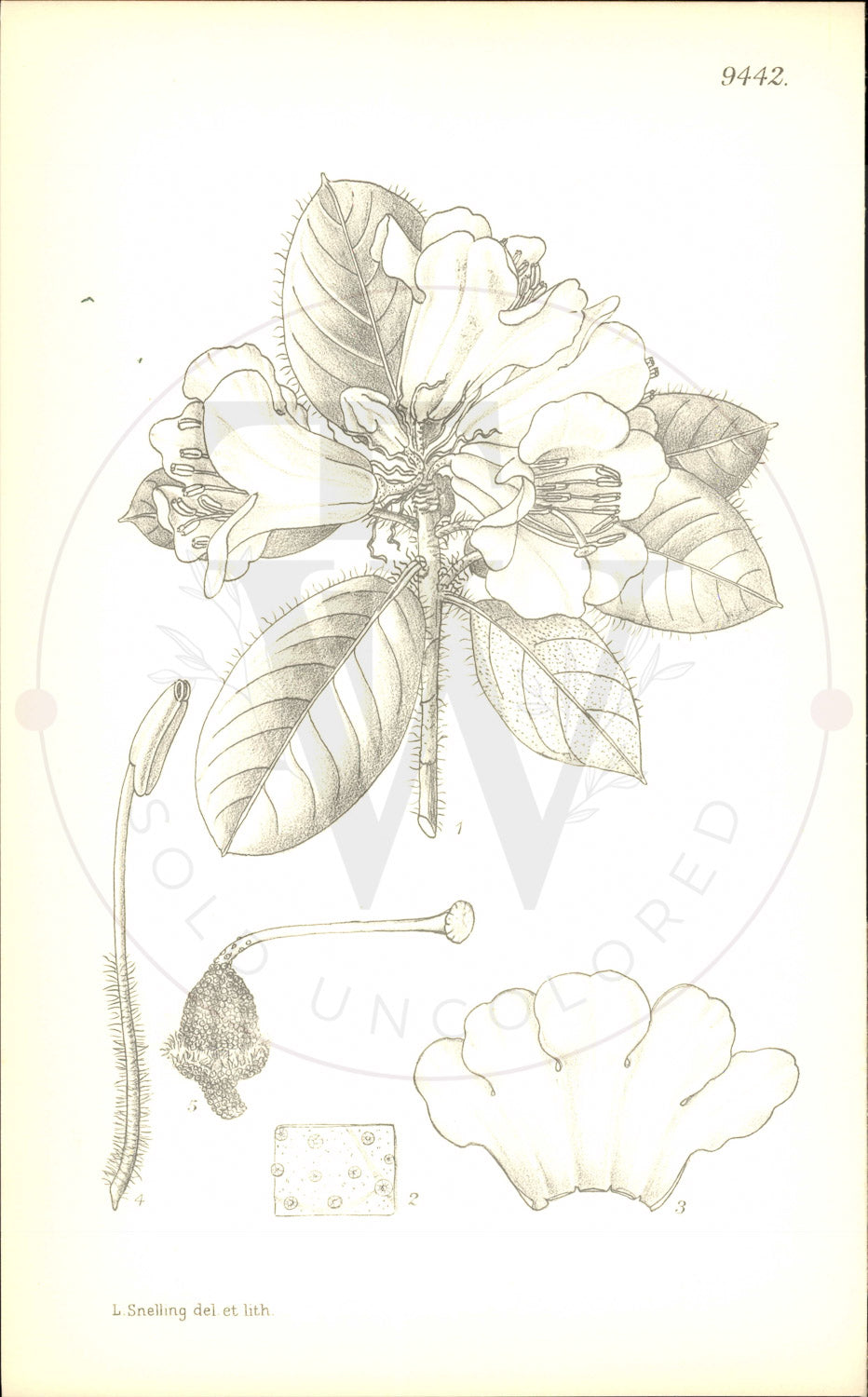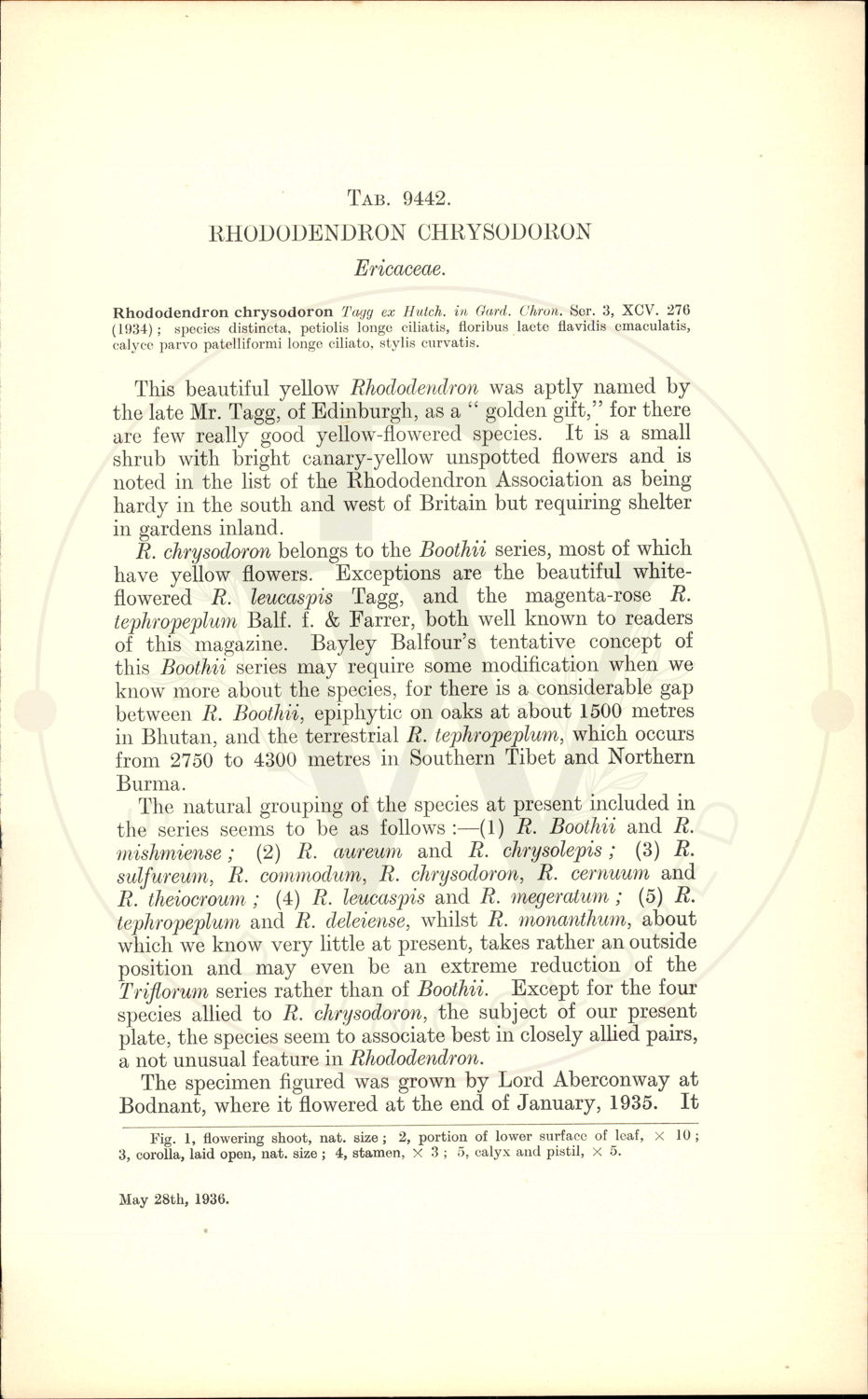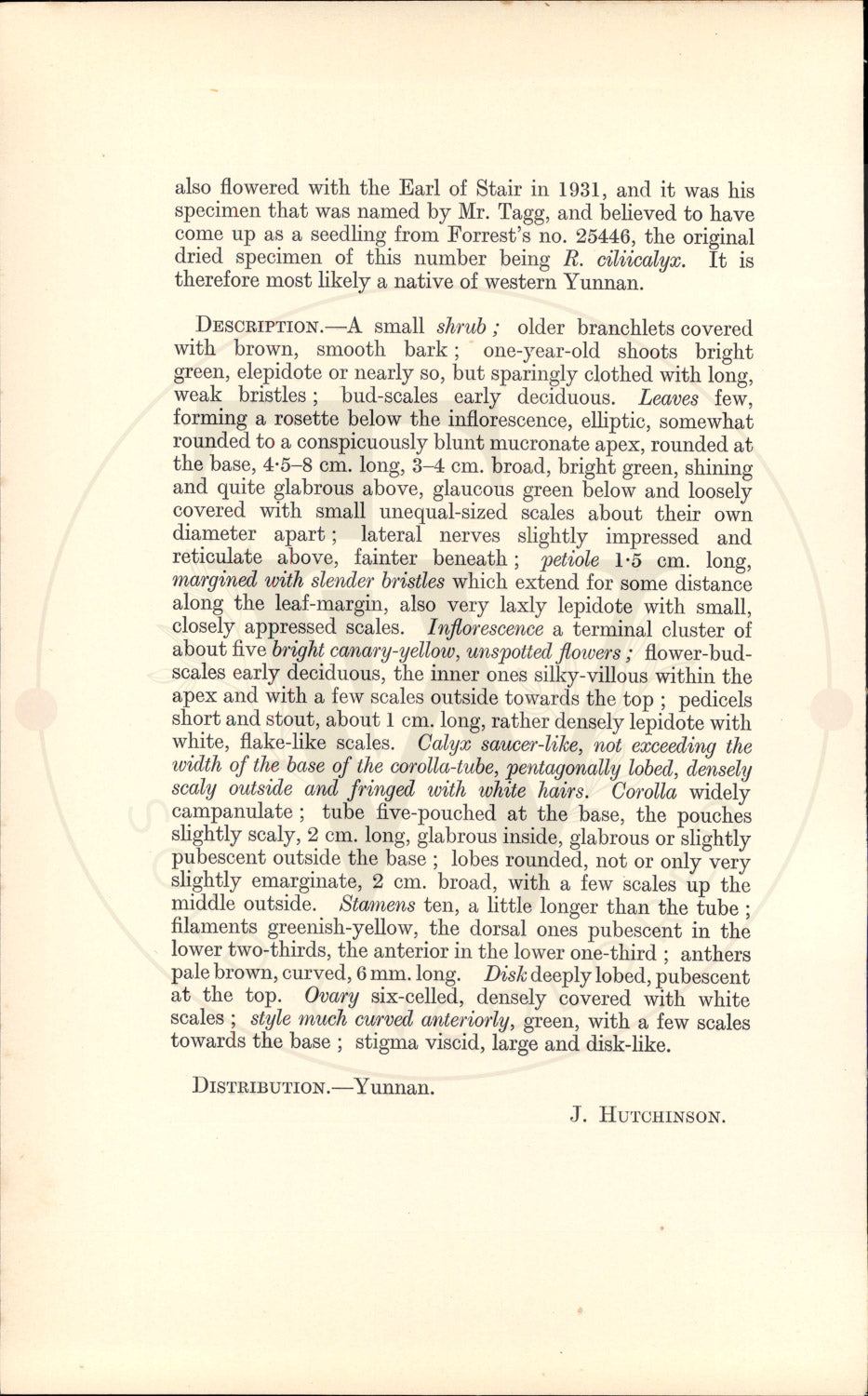Curtis Botanical Magazine
Plate 9442 - Rhododendron chrysodoron
Plate 9442 - Rhododendron chrysodoron
Couldn't load pickup availability
Curtis's Botanical Magazine - Plate 9442
Rhododendron chrysodoron
Native Region: Tibet • Publication Date: January 1st, 1934
Distribution: -Yunnan • Tab Author: J. HUTCHINSON
Botanical Description
This beautiful yellow Rhododendron was aptly named by the late Mr. Tagg, of Edinburgh, as a "golden gift," for there are few really good yellow-flowered species. It is a small shrub with bright canary-yellow unspotted flowers and is noted in the list of the Rhododendron Association as being hardy in the south and west of Britain but requiring shelter in gardens inland. R. chrysodoron belongs to the Boothii series, most of which have yellow flowers. Exceptions are the beautiful white- flowered R. leucaspis Tagg, and the magenta-rose R. tephropeplum Balf. f. & Farrer, both well known to readers of this magazine. Bayley Balfour's tentative concept of this Boothii series may require some modification when we know more about the species, for there is a considerable gap between R. Boothii, epiphytic on oaks at about 1500 metres in Bhutan, and the terrestrial R. tephropeplum, which occurs from 2750 to 4300 metres in Southern Tibet and Northern Burma. The natural grouping of the species at present included in the series seems to be as follows:-(1) R. Boothii and R. mishmiense; (2) R. aureum and R. chrysolepis; (3) R. sulfureum, R. commodum, R. chrysodoron, R. cernuum and R. theiocroum; (4) R. leucaspis and R. megeratum; (5) R. tephropeplum and R. deleiense, whilst R. monanthum, about which we know very little at present, takes rather an outside position and may even be an extreme reduction of the Triflorum series rather than of Boothii. Except for the four species allied to R. chrysodoron, the subject of our present plate, the species seem to associate best in closely allied pairs, a not unusual feature in Rhododendron. The specimen figured was grown by Lord Aberconway at Bodnant, where it flowered at the end of January, 1935. It.
About This Print
Original black and white uncolored botanical print from Curtis's Botanical Magazine (established 1787). This 9000s series print is from unissued publisher stock, never hand-colored, representing the authentic plate as it appeared in the magazine. Edited by Sir Arthur William Hill for The Royal Horticultural Society, London.
Share







